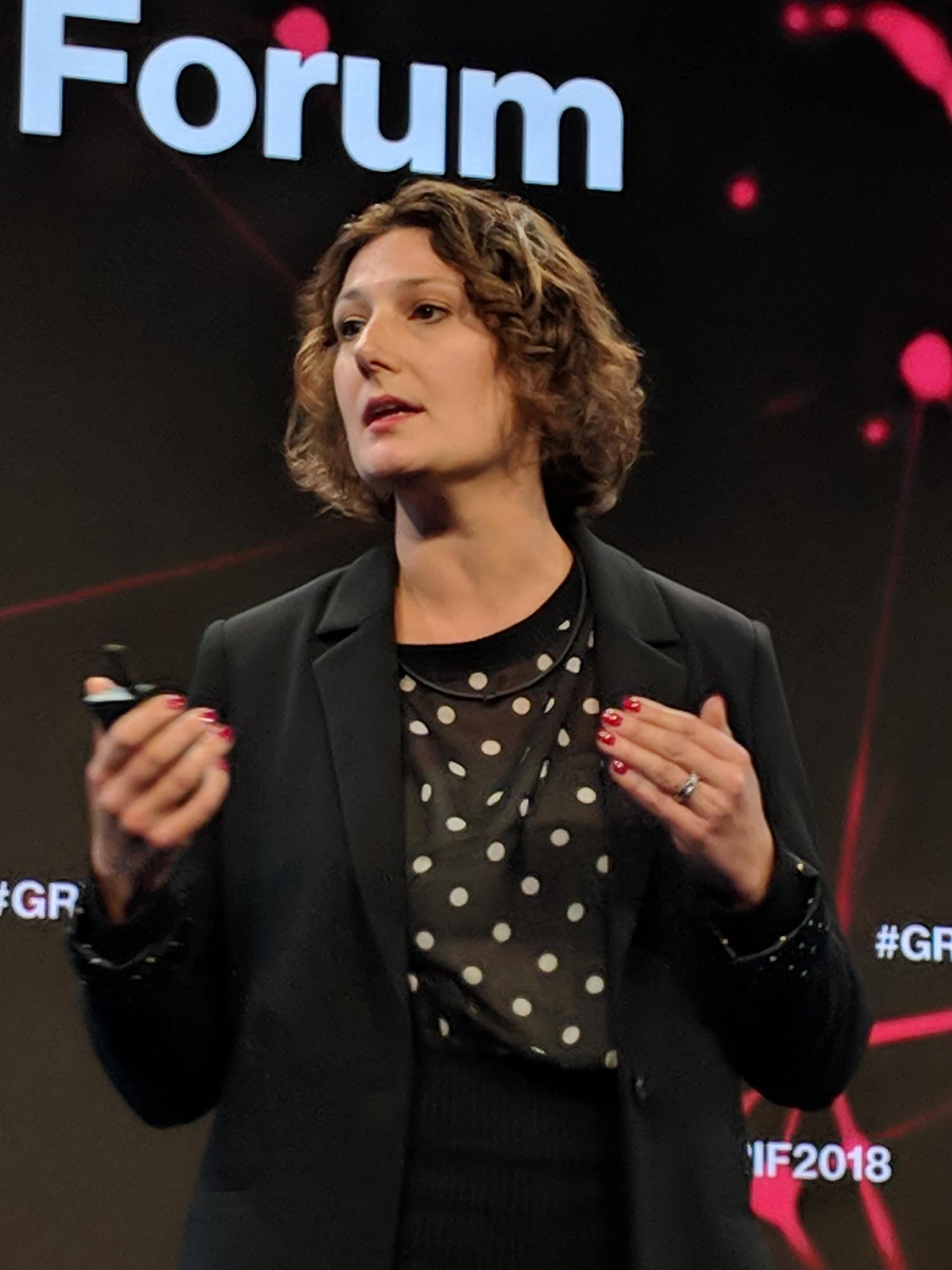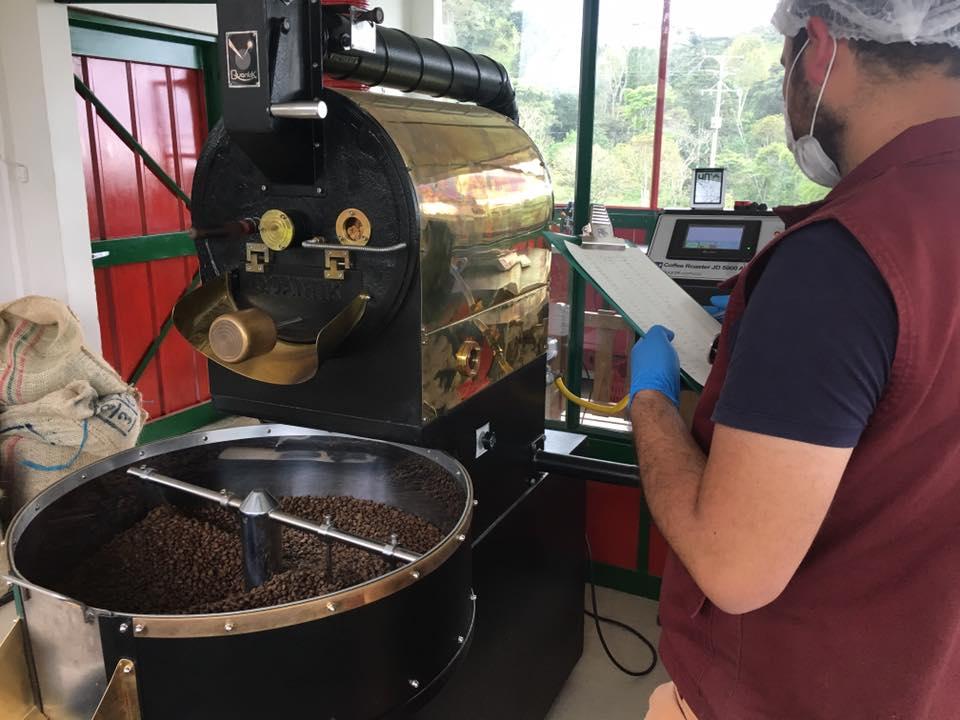December 7th: A Day of Understanding


For older and/or historically inclined Americans, December 7th is “a date will live in infamy”—the anniversary of the 1941 attack on Pearl Harbor that made World War II truly global.
For CEO Action for Diversity & Inclusion, a coalition of over 500 CEOS who have committed their companies to support programs on the issue in the workplace, this December 7th is the first “Day of Understanding.”
The event will consist of a daylong discussion to be held within respective signatory companies to help build more inclusive cultures inside and outside of their workplaces. Sessions will be unique to individual companies depending on the company, the aspects of the diversity and inclusion that it aims to address, and the location of its workforce (whether virtual, across locations or gather in one place). Each session will reflect the distinctive organizational culture of the business but the goal is a common one for all participants: “to build a more trusting place to have complex, and sometimes difficult, conversations about diversity and inclusion.”
CEO Action was started in 2017 by Tim Ryan, Chairman of PwC U.S., who saw enlisting chief executives as key to driving real change. For Ryan, it’s personal: "My goal is to help be one of the many leaders, who can help American business be relevant on inclusion." The initiative took on extra urgency when Botham Jean, a 26-year-old black associate at PwC, was shot and killed in his Dallas home by an off-duty police officer this September. In an email, Ryan encouraged all employees to "take time to understand the experiences our underrepresented minorities — and especially, in this situation, our black colleagues — experience in everyday life so that we can all be better co-workers, friends and allies."
The country-wide “Day of Understanding” across CEO Action’s many companies is an outgrowth of Ryan’s call for a time out to reflect on the Jean shooting. The CEO Action Steering Committee will provide each organization with resources to facilitate the sessions, including unconscious bias training materials, difficult conversation best practices and personal facilitators to help companies shape the discussions and customize the sessions to their organizational culture.
CEO Action said in a statement: “One of the core commitments within CEO Action is to make our workplaces trusting places to have complex, and sometimes difficult, conversations about diversity and inclusion. We feel that by encouraging an ongoing dialogue, we are building trust, encouraging compassion and open-mindedness, and reinforcing our commitment to a culture of inclusivity across our companies.”
As difficult and even uncomfortable as many of the conversations might be, Ryan is 100 percent behind the need for them to take place—especially as driven by business leaders. "While I may not be Latino or black or female, I am a leader of our people and that's where my responsibility lies: to our ethics, to our values, to our people, and to our clients,” Ryan told CNN.
“I think it's the responsibility, regardless of what you look like, or who you are, to take this issue on.”
Image credit: CEO Action for Diversity & Inclusion
More Brands Are Choosing Better Cotton


According to the Better Cotton Initiative (BCI), 2017 was a banner year for sustainable cotton, and this multi-stakeholder group is well on its way to achieve its goal of having 30 percent of all cotton grown globally being grown responsibly and sustainably.
The numbers are impressive – 736,000 metric tonnes of cotton was sourced under BCI’s standards, with several large global corporations playing a key role, including Ikea, Adidas, Gap, Nike and C&A all coming in the top 10 of BCI’s ranking for cotton sourcing.
“BCI Members continue to demonstrate industry leadership to support us on this journey,” said Amy Jackson, BCI’s Director of Membership, during an interview with TriplePundit. “We are truly a collective effort, driving the cotton sector towards sustainability.”
Increasing the supply of sustainable cotton is important as there are several problems with conventionally growth cotton. First, there’s water – cotton has a reputation for being “difficult,” water-wise. Numerous non-profits and global media outlets such as The Guardian have laid blame on it for dwindling water resources in places like India, or for the environmental devastation in the Aral Sea. Then there’s the fact that cotton uses high levels of pesticides, which are connected to water pollution issues in regions like the southern United States.
At the same time, there are few viable alternatives. Its main competitors – synthetics such as polyester, plant-based rayon, or leather – are rife with sustainability challenges as well. Considering the growing concern about polyester based microfibers in the ocean, some are, arguably, worse. None of these alternatives can replace the scale of cotton, which still accounts for 40% of all raw material used in textile production globally. Quite simply stated, cotton is an essential part of the global economy, and that is not changing anytime soon. And, as a product, it has numerous advantages. It is durable, recyclable, and provides livelihoods to millions.
So what is the best path forward? Make cotton better, by increasing the use of environmentally friendly practices across its supply chain that reduce water and pesticide use. That is what BCI aims to do. They define “Better Cotton” as cotton grown following seven principles. These include environmental factors – crop protection, water stewardship, soil health, land, and biodiversity, but also, importantly, social factors too, including decent work and management. The ultimate goal, according to BCI, is to allow farmers to produce cotton that measurably better for the environment and farming communities.
“We’re working towards our aim to transform cotton production worldwide by developing Better Cotton as a sustainable mainstream commodity,” said Jackson. “We are truly a collective effort, driving the cotton sector towards sustainability.”
Unlike other initiatives, which sometimes focus solely on the consumer end, BCI also understands that increasingly the capacity of farmers to produce Better Cotton is as important as getting brands on board. That is why one of their keys programs is to build capacity with farmers through training and partnerships at the field level.
While their achievement – 15 percent – is commendable, hitting 30 percent in just two years will require more brands and even greater engagement with farmers to ensure there is both adequate supply and demand. BCI plans to train 5 million farmers worldwide on more sustainable agricultural practices, and hope to hit 1 million tonnes in 2019. All this effort is noteworthy and is an important milestone on the long path towards a more sustainable global textile and clothing industry.
One thing that could make this impact even greater for the long term: if we could develop a better system for recycling or reusing cotton to ensure it stays in the economy even longer, shifting a linear supply chain into one that is more circular. In fact, this is something researchers are working on around the world. More sustainable cotton is a big step forward, and it’s time for the entire cotton supply chain to embrace circularity and sustainability.
Image credit: Kimberly Vardeman/Flickr
Sustainable Finance Week Debuts on Crowded December Calendar


Scooch over, National Cookie Cutter Week.
Make room, National Hand Washing Awareness Week.
There’s a new commemorative week on the calendar, and it’s providing a compelling platform for corporate reporters and investors steeped in environmental, social and governance (ESG) measures to share their work with the world.
Sustainable Finance Week launched at Bloomberg's world headquarters in Manhattan this Monday, with the first of four events highlighting progress in moving ESG into the mainstream of investing. And attendees were bullish about the week's impact.
“Even with the gridlock at the federal level, U.S. cities are still on track” to achieve the greenhouse gas emission reductions required under the 2016 Paris climate agreement,” said Abigail Dean, head of sustainability for Nuveen’s TH Real Estate unit.
Dean was among Global Responsible Investing Forum presenters discussing the E in ESG – environmental.
Covering the S, social, was Seema Hingorani, founder of the nonprofit Girls Who Invest and former chief investment officer for the New York City Retirement Systems, which had assets of $160 billion.
“There are still firms out there in our business that have cultures that are not all that welcoming to women,” said Hingorani, detailing her efforts to provide a pipeline of trained women to investment firms seeking to achieve gender balance.
Peggy Foran, chief governance officer at Prudential Financial, emphasized G – for governance – and how to hold senior management accountable for diversity and inclusion goals.
“It’s as much about the stick as it is about the carrot,“ said Foran, adding that bonuses can be trimmed by as much as 10 percent if workplace diversity remains static or slips.
Additional Sustainable Finance Week events in New York include a sold-out “Moving the Markets” forum organized by the Sustainable Accounting Standards Board, or SASB. Companies committed to robust sustainability reporting – General Motors, NRG Energy, The Mosaic Company and Medtronic – are scheduled to speak. Also on the agenda, a session focusing on the “complementarity” of SASB and the Global Reporting Initiative, GRI, two frameworks that many viewed as competitive until a recent thaw.
Other events under the Sustainable Finance Week umbrella: RI Americas 2018 Conference and IR Magazine and Corporate Secretary’s “ESG Integration Forum.”
Next up on the national commemorative calendar, Christmas Bird Count Week.
Image credit: Anthony Quintano/Wiki CommonsMany Business Executives Aren’t Prepared for Future Crises


Many business leaders give the impression that they are confident enough to handle any crisis that comes their way, but recent research completed by Washington, D.C.-based APCO Worldwide suggests otherwise. The communications consultancy announced today that only 39 percent of Fortune 1000 executives surveyed indicate that they feel very prepared to manage the risks and disruptions that could be posed by any challenge.
And as APCO’s research digs deeper into the types of disruptions that can derail any company, the survey reveals even more troublesome signs:
- Only 23 percent felt very prepared to respond to consumers’ growing expectations for companies to respond to social issues
- 22 percent felt very prepared to manage a negative event about their company should it unfold on social media
- At a time when companies keep touting their diversity and inclusion efforts, only 18 percent felt very prepared to recruit and retain the best talent in their industry
- In a nod to ongoing concerns about political unrest and volatility occurring worldwide, 14 percent of the executives who responded felt very prepared to respond to geopolitical threats and political uncertainty
“I thought that there would be an industry advantage; for example, many might assume that the tech sector shou
ld be ahead,” said Katie Sprehe, Senior Director at APCO Insight. “But I was surprised to realize that there was actually no discernable industry advantage at all.”
In a nod to the evolving political and social landscapes to which businesses now must adapt, APCO’s researchers found “being able to adapt to changing times and technologies,” was one of the more frequent responses that the survey’s participants repeated time and again.
The survey, which APCO conducted online and by telephone interviews, managed to complete 520 surveys. Respondents represented a variety of functions, including C-suite executives such as CEOs and chief marketing officers, as well as middle managers companies had targeted as aspiring and rising talent.
While the majority of executives APCO had surveyed expressed a strong lack of confidence in their readiness for the future, those who worked within genuinely agile organizations were significantly more likely to have strong financial success. Executives who represented companies that scored highly on what APCO call sits “Agility Indicator” were more likely to experience their companies meet or exceed revenue expectations, to watch their stock price increase and to recover from a major crisis better than those companies that scored lower on the survey.
The difference was remarkable: Sprehe told 3p that 75 percent of the survey’s high scorers said they recovered from recent crises, while 25 percent of low scorers said they had not.
Sprehe suggested that companies and their executive leadership not just focus on preparing for the next social or political crisis in the event they fall into a trap such as those experienced by the likes of United Airlines or Starbucks. “It’s not enough to just focus on the world around you, and it’s not about just monitoring social media,” she said. “It’s about anticipating for these opportunities and looking at the social landscape so you and your team can stay ahead.”
The old rules about what made companies successful, in fact, have changed, suggests this APCO survey. “What we’ve learned is that we have to look beyond the factors that made companies successful in the past,” explained Sprehe. “What business relied on in the past across all sectors, such as simply making money and generating profits, no longer apply. What takes to be agile in this environment is looking inward and taking a hard look at your corporate culture - and work on a goal of having a more enterprising and inclusive corporate culture.”
Image credit: Sébastien Huette/Flickr
Heavy Industry and Transport Slashing Climate Footprint


With the onslaught of sobering climate assessment reports, it is refreshing to get an optimistic take from some of the industries that are among the largest contributors to climate change. In the recently released Mission Possible report, the Energy Transitions Commission (ETC) argues that fully decarbonizing the world’s cement, steel, plastics, trucking, shipping and aviation sectors is technically possible by 2050.
Heavy industry, like cement, steel, and plastics and heavy-duty transport, along with heavy road transport, shipping and aviation together represent 40 percent of carbon emissions from energy systems today, according to the Energy Transitions Commission. This share will grow to 60 percent of remaining emissions by 2040 in a 2°C scenario, as other sectors lower their emissions.
Not easy, but possible
If the Commission’s assessment is realistic, tackling emissions from these harder-to-abate sectors could put a real dent in global carbon reduction targets and would help meet the goal of the Paris Agreement to limit global warming ideally to 1.5°C and well below 2°C. The urgency is clear: the Intergovernmental Panel on Climate Change (IPCC)’s recent special report found that global warming is likely to reach 1.5°C already between 2030 and 2052 if it continues to increase at the current rate.The "Mission Possible" report concludes that the most challenging sectors to decarbonize are plastics, due to end-of-life emissions; cement, due to process emissions; and shipping because of the high cost of decarbonization and the fragmented structure of the industry. The challenge is immense.
In the cement industry, for example, for every ton of cement made, the process releases approximately a ton of carbon dioxide. Some 23 cement producers, accounting for 30 percent of world cement production, formed the Cement Sustainability Initiative (CSI) of the World Business Council for Sustainable Development (WBCSD) in 2017 to accelerate the deployment of low carbon solutions.
The authors of the report, a coalition of global energy leaders including large companies in the sectors, organizations, academics and other thought leaders, are not daunted. They say that abating these sectors could require investing some 0.5 percent of global GDP a year, using mostly existing technology. But efficiencies, employment and advances in technology could more than offset the costs, they argue.
How do we get there?
The report, developed with contributions from over 200 industry experts over a six-month consultation process, argues that complementary sets of actions are required to get the heavy industry sectors to substantially lower their carbon impact:- Limiting demand growth – which can greatly reduce the cost of industrial decarbonization and, to a lower extent, of heavy-duty transport decarbonization;
- Improving energy efficiency – which can enable early progress in emissions reduction and reduce eventual decarbonization costs;
- Applying decarbonization technologies – which will be essential to eventually achieving net-zero CO2 emissions from the energy and industrial systems.
Drilling down to the details
The Commission focused on existing technologies that could be used to green heavy industry and shipping. Managing waste and improving energy efficiency are considered particularly important. Reusing plastic, steel, aluminum and cement could reduce carbon dioxide emissions from those four industries by 40 percent globally, ETC found.Renewables will continue to expand, the report projects, allowing for electric drivetrains and batteries in transportation, and using electricity to generate heat for industrial processes in lieu of fossil fuels. In ETC's view, electricity's share of total final energy demand will need to rise from roughly 20 percent today to more than 60 percent by 2060.
In heavy-duty transport, electric trucks and buses (either battery or hydrogen fuel cells) are likely to become cost-competitive by 2030, while, in shipping and aviation, liquid fuels are likely to remain the preferred option for long distances but can move closer to zero carbon by using bio or synthetic fuels. Improved energy efficiency, greater logistics efficiency and some level of modal shift for both freight and passenger transport could reduce the size of the transition challenge.
The report embraces limited roles for controversial climate technologies like carbon capture and sequestration for the industrial sector and biofuels for aviation. Neither is a broad solution, but both can be helpful in reducing emissions in areas where other alternatives are not available, Kortenhorst said.
Not least, he added, a price on carbon will be significant in providing the incentive for industries to decarbonize, simultaneously incentivizing improved energy efficiency, supply-side decarbonization and demand reduction.
Strong business case
Succeeding in decarbonizing the harder-to-abate sectors would not only limit the harmful impact of climate change, Commissioners argue, but drive prosperity through rapid technological innovation and job creation in new industries.New investment opportunities will also arise both in low- carbon infrastructure, and in companies that take advantage of low-carbon innovation in materials, products and business models, the report notes.
Creating demand for “green” materials and mobility services, initially at a premium price, could help expand commitment to 100 percent electric vehicles by businesses and cities and accelerate the commitment to low-lifecycle-carbon-emissions materials for commercial and industrial buildings, among other benefits.
Image credit: Pixabay
Corona Fights Ocean Pollution by Thinking Outside the Ring


A sustainable new wrinkle on those ubiquitous plastic six-pack rings demonstrates how one relatively modest improvement in product packaging can have an outsized impact on global pollution issues -- and help establish a brand as a sustainability leader, too. Ocean plastic pollution is a case in point. Though plastic six-pack rings are only one small fraction of the ocean plastic problem, the new rings provide a clear demonstration that solutions are at hand.
As a member of the AB-InBev corporate umbrella, Corona is the first global beer brand to announce it is using the new packaging, but the story actually starts -- as many do these days -- with an independent microbrewery.
The ocean plastic pollution: who is to blame?
The new six-pack rings cut to the heart of the ocean plastic pollution issue in terms of responsibility. Though often cast as the result of inefficiencies and downright bad behavior at the consumer end, in reality ocean plastic is both a consumer and a producer problem.
Consumer education and recycling programs can reduce plastic pollution, but relying on 7 billion people (and counting) to exercise good behavior on a daily basis is simply not a realistic policy.
A permanent solution will only occur when consumers can no longer get their hands on products that contribute to the problem.
That may not seem quite fair. Nevertheless, when the aim is to solve a problem, abstract moralizing over personal responsibility does not make a particularly strong case compared to viral photos of product packaging entwined around helpless birds, turtles, dolphins, seals and other sea creatures.
The little six-pack rings that could
That's where the new six-pack rings come in. Back in 2016 heart-rending pictures of aquatic creatures tangled up in the unforgiving grip of plastic six-pack rings sent the New York creative agency We Believers on a mission to develop alternative packaging for its client, the Florida based craft microbrewer Saltwater Brewery.
We Believers hit upon an obvious solution: channel some of the massive amounts of fibrous barley and wheat leftovers from the brewing process into creating six-pack rings that are biodegradable, compostable, and safely edible, too.
That's not as simple as it sounds. Creating a plastic substitute that is sturdy, flexible, and biodegradable is a challenge. Sustainable packaging can also add expenses that are unsustainable for a small operation like Saltwater Brewery, unless they are passed along to the customer.
When Saltwater adopted the new rings, it was counting on concern about the plastic pollution problem to help convince its loyal customers to pay a little extra for their six-packs.
Over the long run, though, companies like Saltwater would need to convince other beverage producers to hop on the sustainable packaging bandwagon. Ideally, economies of scale would kick in once demand for the new packaging increases, helping to keep costs down.
Scaling up sustainable packaging
The sustainable six-pack experiment could have begun and ended with Saltwater, but as it happens the co-founder of We Believers, Marco Vega, is a graduate of the Darden School of Business at the University of Virginia who spent time as a process engineer at Procter & Gamble.
The new rings were featured in a 2017 article in the University of Virginia publication UVAToday, which describes how Vega and his partner Gustavo Lauria drew on their experiences to develop a prototype for the sustainable packaging:
“Within six weeks, we had gone from that text message to the initial prototype,” said Vega, who collaborated on the prototype with an outside engineering firm. “That process usually takes at least eight to 12 months for established companies.”Vega, who said he has been influenced by the entrepreneurial teachings of Darden professors Greg Fairchild, Saras Sarasvathy and Jeanne Liedtka, among others, continued to rapidly move the idea forward, creating the initial prototype on a 3-D printer and using a hydraulic press to produce the first 400 units.
With the prototype in hand, the partners produced a commercial with Saltwater that included images of wildlife entangled with -- and nibbling on -- plastic packaging.
The response was stunning:
“When we put that online, it just spread like wildfire,” Vega said. “It’s been breathtaking.”Vega said the video has had more than 250 million views on Facebook and north of 8 billion global impressions and believes it may lay claim to being “the most viral communication in beer advertising history.”
Testing the power of "brand venturing"
The process of working with Saltwater lead Vega to develop the concept of "brand venturing." As described in UVAToday, Vega believes that the response to the Saltwater commercial was enthusiastic not because the commercial itself was particularly clever, but because it portrayed the brand taking leadership to find a solution to a "widely vexing problem:"
“That’s the new way to build brands...We call it ‘brand venturing’: a combination between the effectuation theory of entrepreneurship, design thinking and the creative process.
Show people a solution to a “public enemy No. 1,” and they will rally behind you...It pays to be brave enough to co-create your product or service with consumers these days.”
Advertising and advocacy: perfect together
The brand venturing approach was a winner for both We Believers and Saltwater, at least in terms of raising the microbrewer's profile.
The rest of the story falls into place when you consider that global beermakers are watching -- and acquiring -- microbreweries that are winning hearts and minds.
AB InBev is one global company that has recognized how independent microbreweries can act as a kind of "farm system" for the major leagues of beermaking. The company is not just acquiring them but also attempting to nurture them. For example, earlier this year AB InBev announced that it would provide a new patent-protected, money-saving process free of charge to small breweries.
No, AB InBev did not acquire Saltwater (yet). However, Saltwater's success in marketing the new six-pack rings may have inspired AB InBev to act. Last week, the Corona brand announced that it will become the first global beer brand to use sustainable six-pack rings. The initiative will start in Mexico early next year and then extend to the U.K.
One reason to be optimistic about the success of the Corona initiative is that the brand has already set the table through its "This is Living" ad campaign, which draws an intimate connection between consumers and the beach lifestyle.
Even more importantly, the new rings are just part of Corona's efforts to take on ocean plastic through a new partnership with the collaborative organization Parley for the Oceans.
Somewhat ironically, Corona relies much more on glass bottles and cardboard boxes than ring-style packaging. Nevertheless, the brand sees an opportunity to lend its high profile to the search for producer-based solutions:
The beach is an important part of Corona’s DNA and we have been working with Parley to address the issue on the front lines where plastic is physically accumulating...We also recognize the influence a global brand like Corona can have on the industry, and with the support of Parley, are pursuing scalable solutions like plastic-free six pack rings that can become a new standard to avoid plastic for good.
That emphasis on industry responsibility is reinforced by Corona's experiences with Parley. The partnership began last year, and Corona has adopted Parley's "Avoid, Intercept, Redesign" strategy to emphasize that solutions need to extend beyond consumer responsibility:
With roughly 8 MM metric tons of plastic entering the ocean each year, there is a need to confront the issue on multiple fronts, which is why Corona has adopted Parley’s A.I.R. strategy to not only “avoid” and “intercept” plastic as much as possible, but also help “redesign” solutions that use the material."
Corona and Parley partnered on several awareness-raising initiatives last summer, including a limited edition Hawaiian-style shirt made with Parley's proprietary recovered ocean plastic fabric, with proceeds from the sale donated to Parley.
Another key highlight of the partnership is Corona's pledge to protect 100 islands from plastic pollution by 2020. That endeavor has already involved hundreds of beach cleanup projects, but as Corona points out, removing plastic pollution from beaches is a Sisyphean task -- and brands taking stands is the only permanent solution.
Photo: Corona via businesswire.com.
Why I’m Developing for Mars and Sustainable Life in Space


This post was written by guest blogger Dr. Natalie Rens, CEO of Spaceport AI. She recently spoke as part of Cisco’s Women Rock-IT series.
We explore Mars for many reasons, be it the risk minimization of distributing our species across multiple planets or the fact that our population is growing at a rate that is unsustainable for our Earth’s resources.
For me, it is the insatiable spirit of exploration. It is all the inventions we will create to help Earth as a result of pushing our skills to their most extreme, and it is the fact that aiming for a goal this grand has the power to draw together people from every background.
When I was young, I used to dream of one day exploring the Amazon rainforest in search of medicinal plants I could create new cures from. I was enchanted with the idea of facing the unknown, with all its danger, to create something that would help as many people as I could.
With that in mind, ever impatient, I left school at 16 to begin studying Biomedical Sciences. As my studies went on, I specialized in neuroscience and ultimately completed a Ph.D. in Neuroscience, in which I focused on using machine learning to predict voluntary decisions.
However, I had become disenchanted with academia over time, feeling that it was not allowing me to achieve the impact I wanted. So, I gravitated towards the technology scene, with its wilder ideas and faster pace.
AI and the Final Frontier
The crux moment came when attending an emerging technology conference in San Diego, for which a significant focus was artificial intelligence (AI). AI represented the wonders of information combined with the ability to transform everything around us, from agriculture to healthcare.
This, to me, seemed like a field that would soon impact all of society. The only problem was that apparently nobody knew about it. Arriving back in Brisbane, I searched for public events on AI and, finding nothing, promptly started the Meetup community Brisbane.AI with a friend. That decision led to a group that is now over 2,000 strong and led me to a role working on AI strategy for the Office of the Queensland Chief Entrepreneur.
This past year has been a whirlwind and, through my role, I have been very fortunate to win support to create a multi-millionaire dollar project to build our own Queensland AI Centre.
Still, I found myself searching for that childhood taste for exploration and, while the pieces had been falling into place for a few years, my brain hadn’t quite put them together. There had been a moment watching the National Geographic Mars series where the idea of an astronaut risking everything for the advancement of human knowledge struck me so profoundly I started crying uncontrollably.
Then, there was the fact card on Mars that I had found myself carrying with me for the past year.
Finally, in February this year, SpaceX successfully launched the Falcon Heavy rocket and, seeing Starman in space, the puzzle clicked into place. It occurred to me then that Mars was not just a fictional dream of engineers and sci-fi nerds, but a place our generation could make a real home someday. By doing so, we would be opening the path to explore and inhabit the rest of our solar system, and then maybe even beyond. It would be the biggest goal we had ever conquered as a species.
Sustainable life in space
I knew that SpaceX was building the BFR to transport humans to Mars one day, but I had no idea what else was being done for the other vital bit — keeping us alive. A frantic few months of heavy reading followed, looking into SpaceX and NASA plans, human psychology in space books, and research articles on everything from automation in the ISS to radiation protection materials.
What I discovered was that most everything in space is trying to kill you. There is almost no oxygen or atmosphere on Mars, and it has one-third the gravity of Earth, which wreaks havoc on the human body. Exposure to cosmic radiation also significantly increases the risk of cancer. Furthermore, most of the processes on the ISS are led by mission control, while in emergencies astronauts are sent back to Earth. On Mars, where the communication lag is between 4-24 minutes, we would need to automate all these processes, and there would be no going back.
The more I read, the more challenges I found. Yet, according to plans, the first crewed mission was set for within the decade. If we were going to make it, we needed to get working not in a few years, but now.
With no time to lose, I launched Spaceport AI. The company’s mission is to build AI technologies that will enable sustainable human life in space. Currently, we are preparing our first projects in the fields of human life support, autonomous systems, and habitat sustainability, using AI for its power to automate operations and assist astronauts.
We envision exploration where, rather than receiving medical support from mission control, astronauts can use wearables that monitor and predict health in real-time. Where greenhouses could sense conditions and adapt to optimize plant growth. Where, with strong advancements, we could even have autonomous robots completing tasks and heading off for scientific exploration.
We are also running AI courses, both to help the community at large but also to teach our own crew. I have already come across so many young, passionate individuals that dream of helping mankind reach the stars, and that matters far more to us than the five years’ technical experience many larger organizations demand.
Founding Spaceport AI, I never stopped to think whether I was the person to do it or not, with my three months’ experience in space, but just that it was a hugely important problem to solve and working on it was more likely to solve the problem than not working on it at all.
However, if we are going to make the mission to Mars successful, which we must, then we will need the passion and work of many thousands of people, from all across the globe. It will truly be a feat of mankind.
I may look back at this all one day and wonder at how naive I was but, as I stand, I have this wondrous sense of conviction in the goal I am working towards. Like my childhood dream of the Amazon, I finally get to reach for unknown territories in order to help humanity.
If you missed Natalie’s inspiring webinar, please watch the replay today!
Also posted on 3BL Media news.
Image credit: NASA
Can Consumers Trust Products Containing Palm Oil?


Is there a more controversial topic in agriculture than palm oil right now? The debate about this versatile vegetable oil is increasingly polarized as evidenced by the reactions to the recent kerfuffle over whether Iceland Foods re-made Greenpeace video-come-Christmas ad should be aired in the United Kingdom.
The video controversy is the latest in a string of campaign actions against palm oil, calling for brands and producers to drop “dirty” palm oil. As the war of words continues online, opinions are divided over whether it presents insight or inaccuracy. Meanwhile, what about consumers? After seeing this video, are consumers really any more informed than they were before?
Owning our shortcomings
Before we get into how versatile and productive palm oil is, and how doing away with it opens up a Pandora’s box of potential unintended consequences that could be at least as bad for the planet, if not worse, I want to make one statement clear upfront. The palm oil sector still has a lot of work to do to complete the transformation that is currently underway.My company, Golden Agri-Resources, is among the leaders in this process of change. We are committed to ensuring our operations have a no deforestation footprint and have a positive impact on the communities in which we operate. We are the first to admit that palm oil, as an industry, isn’t without its faults. However, good progress has been made in recent years to improve its sustainability. Of the many industries that have contributed to deforestation over the years, palm oil has made some of the greatest strides in addressing deforestation. GAR alone has set aside 72,000 hectares of conservation land, an area the size of Singapore.
Positive change is happening in a sector that has, in the past, been slow to recognize problems, and even slower to act. This progress should be recognized and encouraged, if we are going to bring the majority of palm oil producers with us on this journey of change. This is especially true of smallholder farmers who make up the backbone of the industry and who are most vulnerable to the damage calls for bans and boycotts can do.
If not palm oil, then what?
The reality is palm oil is up to 10 times more productive than the other vegetable oils that would otherwise replace it, producing more oil and using less fertilizer and pesticides. A recent report from the International Union for Conservation of Nature stated that saying no to palm oil would significantly increase the total land area used for vegetable oil production to meet global demand. Currently, palm oil production uses about 7 percent of the world’s agricultural land to produce 32 percent of the world’s oil needs. Palm oil also requests much less fertilizer and pesticides as compared with rapeseed (canola) and soybean.A former colleague in this space was fond of saying if palm oil didn’t exist, we would have to invent it such are its extraordinary qualities. Beyond its incredible yield per hectare, its applications seem endless. It can be used in food, personal care products and even bioenergy. This versatility has been used against it by some who think palm oil’s ubiquity in our diets and lifestyles is sinister. Again, what would we replace palm oil with? And what would be the environmental and social implications of the alternative? Those are the questions we need to weigh up.
Can a plant ever be bad or good?
Oil palm is just a plant, plants are not good or bad. It is how you grow it that matters. The fruit of this tree produces an incredibly healthy and efficient vegetable oil. Palm oil is rich in anti-oxidants and carotenes (Vitamin A) and Vitamin E. It also contains phytosterols, compounds found in plants that are scientifically proven to help lower cholesterol. Its versatility and the fact that it doesn’t need to go through a hydrogenation process makes it a popular ingredient in the foods and consumer goods. The use of the catch-all “vegetable oil” tag, has contributed to a sense that palm oil is a “hidden” ingredient (it’s not the only oil this label is applied to). It never has been, and never will be, in the industry’s interest to ‘hide’ palm oil as an ingredient. To help raise consumer awareness around which products contain the ingredient, GAR developed a handy “Palm Oil Products in a Supermarket” tool that can tell you exactly which consumables contain palm oil. On pack identification helps consumers make choices about what they do or don’t want to buy and encourages manufacturers to explain and defend their purchasing decisions.Who to trust?
But why should anyone take my word for it? Why should consumers trust palm oil? Trust is built from understanding, which requires openness and transparency. It also requires space to have a balanced and informed debate. Space, and a sense of balance, is currently lacking in the palm oil discussion. Is it any wonder that despite Greenpeace’s protestations that it is not anti-palm oil but anti-deforestation, the general public, when bombarded by repeated anti-palm oil messages, takes the easy out and calls for boycotts?Critics will say – well she works for a palm oil company, you would expect her to defend it. My role within GAR is to provide customers and consumers with information to help them to make informed choices about the palm oil products we produce and that they use. As an advisor to the business, I am also involved in the day-to-day discussions about how we produce those products responsibly with minimal environmental impact and maximizing the benefits to the farmers and communities with whom we work. We report on this effort consistently through our annual Sustainability Report and our website.
We appreciate that not everyone will read through a hefty report before buying a bottle of shampoo to understand if its ingredients are sustainable. This is why we held a Twitter Chat, in partnership with TriplePundit, to raise awareness of the #peoplebehindpalmoil and the realities of this crop.
Questions raised in this open discussion include: how do consumers know what products contain palm oil? How can mothers be sure that what they are feeding their children is responsibly sourced?
Making wise choices as consumers
As a mother myself this last question had very specific resonance. How can consumers tell which products contain sustainable palm oil? First and foremost, the food industry needs to work together to better inform consumers and empower them to make more sustainable choices. RSPO (Roundtable of Sustainable Palm Oil) certified palm oil is a good place to start.Second, customer advocacy is the best way to instigate long-term change. We, as consumers, need to ask the brands we love what they source and where from. Companies such as Nestlé are already doing an incredible job to raise awareness and have committed to only using 100 percent sustainably sourced palm oil by 2020.
We must also be prepared to pay a little more for sustainable products to ensure that those growing the product are able to make a decent living. When prices are low, farmers tend to resort to traditional and cheaper farming techniques. Traditional methods are often harmful to the environment and less sustainable.
It is easy to feel overwhelmed by the constant din of voices and opinions out there. We all want to ensure that we preserve our planet for future generations but blanket bans or simply walking away never fixes a problem. We must understand the issues, identify the solutions and all take action together. I’d urge you to follow GAR on Twitter (@GAR_Sinarmas) to gain more insight on this extraordinary crop, and join the conversation on how sustainable palm oil can and is becoming a reality.
Image credits: Golden Agri-Resources
Colombian Coffee Icon Juan Valdez is Going Sustainable


Since the late 1950s, the fictional Juan Valdez has been the face of Colombian coffee. The indefatigable Juan and his trusted mule, Conchita, have long enjoyed their role carrying one of the world’s most iconic brands, and have starred in countless television commercials. The actors playing Juan have changed over the years, but the fundamental story has not: Colombia has long had the reputation for hosting one of the best coffee-growing regions on Earth, as this 30-year commercial that used to make the rounds in the United Kingdom proclaimed:
The force behind Juan Valdez is the National Federation of Coffee Growers of Colombia (Federación Nacional de Cafeteros de Colombia, or FNC), which for over 90 years has led the promotion, production and export of Colombian coffee to the world.
It is because of FNC that coffee is closely tied with Colombia’s national identity. The organization’s efforts are why the country endures as the world’s third largest coffee producer. FNC’s branding is why any Colombian with means has a frequent buyer account with the Juan Valdez chain of coffee shops. And finally, FNC's drive is why outside of the Zona Cafetera (coffee growing region) of Colombia, many foreign visitors complain they cannot find a decent cup of coffee: after all, the best beans are exported to North America, Europe and East Asia.
Coffee is one reason why Colombia’s economy has been growing at a stable, upward trajectory over the past decade, avoiding the volatility that has beset other South American countries such as Brazil and Argentina. If Colombia’s economy will continue to rise (last year the World Bank ranked the country’s economy as the world’s 39th-largest), coffee will continue to be part of that equation.
FNC also realizes that the surging demand for coffee worldwide can only continue if growers cultivate coffee sustainably. To that end, the organization has focused on ensuring that Colombia’s coffee is produced ethically and responsibly. At the moment, FNC touts a bevy of sustainability programs that rests on four pillars: communities, farms, the environment and information technology.
This shift has also opened another door for more coffee farmers – the opportunity to benefit from the surge in tourism Colombia has enjoyed over the past several years. The beans that have made Colombian coffee coveted worldwide are grown throughout some of the country’s most spectacular scenery.
Those beans, as in the species of coffee for which Colombia has become famous, arabica, have behooved Colombian coffee growers to become better caretakers of their land.
Unlike robusta, the species largely grown within the world’s two largest coffee producers, Brazil and Vietnam, arabica beans thrive in higher, mountainous altitudes. Robusta grows better in warmer climates and lower altitudes, and also produces higher yields. Hence those beans end up in more in mass-produced coffee blends, instant coffee and the espresso blends popular across Europe. Gourmet and single-bean origin coffees from Colombia are generally the arabica variety – a species that is also more challenging to grow as it is more susceptible to pests and wide fluctuations in temperatures.
If arabica coffee will continue to flourish in Colombia at a time when climate change poses long-term threats to the global industry, Colombia’s coffee growers have got to be more mindful of challenges including water management, pests and biodiversity.
On that point, FNC says it up to the task of ensuring Colombia’s 500,000 coffee growers will still have a crop to grow in the coming decades.
On biodiversity, for example, FNC says it has been working on this front across Colombia for over a quarter century. The country’s abundance of flora and fauna is one reason why Colombia continues to attract more travelers year after year, as many environmental groups estimate Colombia has the world’s second-richest biodiversity after Brazil. Preserving Colombia’s biodiversity is not only good for the environment, but it can also sustain the country’s coffee industry while offering growers additional revenue streams related to tourism.
One example of how FNC is working with growers and local governments is Recinto del Pensamiento, a nature park located seven miles (11 kilometers) outside the central Colombian city of Manizales. The sprawling grounds, which are also home to one of the many local FNC committees, showcase plants and animals that can coexist with coffee farms. The park employs staff that take pains to conserve pollinators such as butterflies and hummingbirds; other workers cultivate orchids and native plants. Additional staff members work as guides who take visitors on two-hour tours across the park to explain the value of biodiversity, as in how various trees can provide the shade necessary that allows Colombia’s arabica trees to produce those lucrative beans year after year.
This park’s program is one key to FNC’s goal to educate the Colombian public about the need for the country’s industry to become better stewards of the environment. While Recinto del Pensamiento is mentioned in just about every travel source, from Lonely Planet to TripAdvisor, my guide told me that day after day, the overwhelming majority of its visitors are Colombian. “Yes, the grounds are beautiful and make for excellent Instagram posts, but the real value we offer is to show people how important caring for the environment is to the future of Colombia and its coffee industry,” as one employee explained to TriplePundit.
In addition to environmental education programs, FNC is also working with growers to improve the coffee industry’s overall social impact. The organization’s current five-year strategic plan seeks improvement in three areas: more investment in rural education programs; the introduction of programs that can boost the quality of life for the industry’s workers; and building better infrastructure so that growers can seamlessly transport their product from farms to global markets. FNC also launched a program earlier this year that seeks to make the sector more inclusive by taking on problems such as sexism and homophobia.
While Colombia’s coffee industry has made considerable strides in improving its sustainability performance, the country’s farmers cannot confront all the social, environmental and economic challenges alone. 2018 has been a rough year for coffee farmers: prices are down, labor costs are up, and while more people in emerging economies are drinking more coffee, consumption in producing countries such as Colombia is flat. According to a recent Bloomberg report, farmers face an uphill climb when it comes to making a decent living: for every $3.50 someone spends at Starbucks on Colombian coffee, only three cents of that amount goes into a Colombian farmer’s pocket. FNC believes buyers, exporters and coffee roasters need to do their part so Colombian coffee can be viable for the long run. "Everybody in the chain should be co-responsible for the sustainability of the whole [value] chain,” said Roberto Vélez Vallejo, FNC’s CEO, during an interview with Bloomberg’s Alix Steel last May.
Image credits: Leon Kaye
Ensuring Business Innovation While Protecting Data Privacy: A Balancing Act


With connected devices expected to top 11 billion in 2018, innovative technologies such as the Internet of Things (IoT), big data and artificial intelligence (AI) are increasingly driving business innovation.
An overwhelming 97.2 percent of executives in the annual executive survey published by NewVantage Partners report that their companies are investing in building or launching big data and AI initiatives, including American Express, Capital One, Ford Motors, Goldman Sachs, MetLife, Morgan Stanley, and Verizon.
The boost to the economy is predicted to be huge: McKinsey estimates that linking the physical and digital worlds could generate up to $11.1 trillion a year in economic value by 2025.
But how are companies managing the balance between digital innovation and protecting the privacy of data? Digital technologies enhance convenience, efficiency and economic growth. At the same time, they require complex networking environments and use detailed data about individuals that can make protecting their privacy harder.
Developing a U.S. privacy framework
Unlike Europe, where the European Union’s General Data Protection Regulation (GDPR) became enforceable earlier this year, the U.S. federal government has yet to pass a GDPR-like mechanism.
In the absence of such legislation, the Information Accountability Foundation (IAF) in August released the first draft of a U.S. data privacy framework containing 12 principles that outline individual privacy rights and corporate accountability.
The initiative informs the ongoing collaborative project announced by the U.S. Department of Commerce’s National Institute of Standards and Technology (NIST) in October to develop a voluntary privacy framework to help organizations manage risk.
In announcing the framework, the nonprofit declared, “Consent is important but not enough.”
The framework recognizes the great potential of data to innovate in sectors ranging from medicine, safety and education, to transportation and product development, while underscoring the responsibility of companies to leverage data responsibly.
“This recognition requires organizations to be transparent about values, to use their values when driving innovation, and to make sure that people are the end and not the means,” the IAF states.
Calling for ethics and transparency
According to Martin Abrams, executive director of the IAF, the principles recognize that “thinking and learning with data is basic to mankind’s progress and that these learnings must be understood and applied in an ethical manner.”
“We’re focused on how you can use information to beneficial effect and do so in a fashion that is protective in world that is increasingly using technologies like artificial intelligence, things that rub hard against data privacy and privacy law,” Abrams told TriplePundit. “We look at how we can think outside box to use data in an innovative fashion.”
Long history of innovating with data
“Thinking and learning with data has been the single most important differentiator that has made American business the world’s data innovators,” Abrams says.
There is a distinction between the two, he explains. “If there is a history of cancer in your family that is detectable from your gene pattern, the research that enables that insight is thinking with data. The decision that doctors make using that gene pattern is acting with data.”
Abrams points out that in every other major privacy regime, every activity touched by data is a form of data processing that requires permission from either individuals or the law. “In the U.S., thinking with data is protected by data security rules but, in most instances, not by privacy rules,” he says.
Data-driven innovation has been the spark that has driven the American consumer economy since the 1970’s, he argues. “This innovation is well worth preserving as we explore new privacy frameworks for the U.S.”
Corporate responsibility for data privacy
The IAF framework’s 12 principles are divided into two parts: Four for individual rights and eight for accountability. It is intended to meet several aims: Preserve America’s innovation engine; be interoperable with other new and emerging privacy regimes; protect individuals’ interests in privacy; and protect all the benefits of the 21st century information age.
The eight accountability principles form the stewardship role of those who must be accountable for the use of data, including companies. That includes ensuring data collection, use and disclosure complies with law; that data is secure; and that is used within an appropriate context and for legitimate uses.
Some companies, Abrams says, are already using these principles around data accountability. That will ease their ability to meet the GDPR requirement of data privacy impact assessments. A survey by HyTrust, Inc., a workload security solutions firm, however, found that only 21 percent of organizations it surveyed were concerned about GDPR or had a plan in place.
The guidance offered by the IAF is a start to try to resolve these issues, Abrams says.
“Back in the 1990s when the Internet became a consumer medium, we made a decision that observing individuals’ behavior online to understand how they behave online was part of the public commons, and that had huge implications for the expansion of observable data,” Abrams says. “It’s a concept we still struggle with. All the decisions we make are still based on the concept that the Internet is like the public commons and extends to putting tracking programs on our devices.
“The question is, as the privacy debate heats up, are we going to conclude that all this observational data is in the public commons or in the private space?” Abrams reflects. “That is a really hard issue to resolve. Yes, the data opens up innovation but it reduces our ability to have privacy and to think and act in a way that is protected. You can say our organization was formed to deal with this conundrum.”
Lawmakers want to protect innovation and consumers
Some members of the U.S. Congress are ready to tackle the thorny issue of data privacy. As U.S. Senator John Thune, chairman of the Senate Commerce Committee, wrote in The Hill:
“The time has come for Congress to work on putting consumer data privacy protections into law. For years, the wizards of the tech world have amazed all of us and helped fuel our economy with innovative products and services. No one wants that to end.
“At the same time, mounting controversies have undermined public trust in the ability and willingness of leading technology companies to regulate themselves and enforce real privacy safeguards for the collection and use of our digital data. The question is no longer whether we need a national law to protect consumers’ privacy. The question is what shape that law should take.”
Thune argues that a successful consumer data privacy law will “help consumers and reward organizations with little to hide, promote innovation, and force shady practitioners to clean up their act or fold up shop.”
Image: Unsplash/Joseph Gruenthal